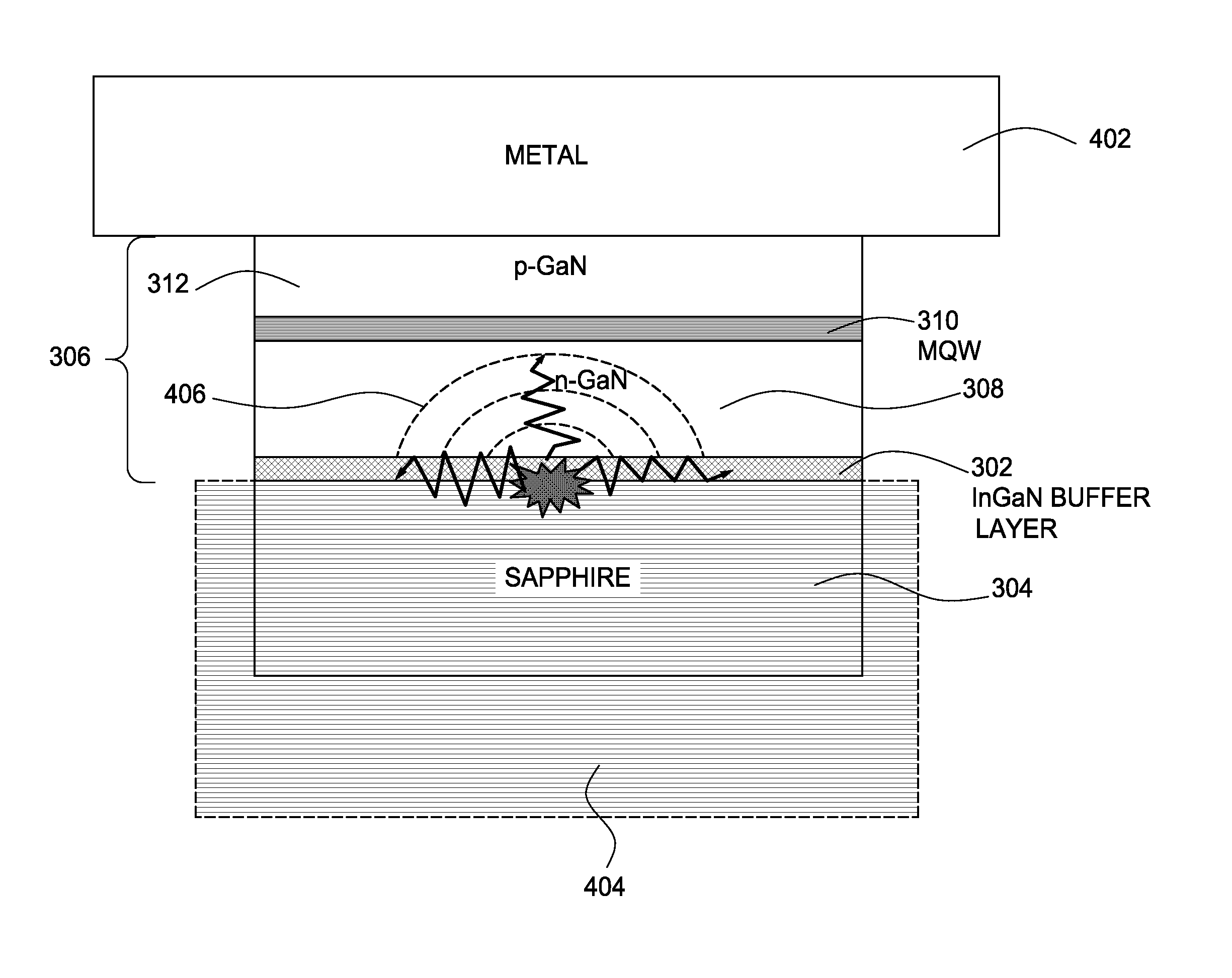Method for producing group iii - group v vertical light-emitting diodes
a technology of light-emitting diodes and dies, which is applied in the direction of semiconductor/solid-state device manufacturing, semiconductor devices, electrical equipment, etc., can solve the problems of damage to the critical light-emitting active layer, the layer of group iii-n compound semiconductor materials cannot be simply formed with high crystalline quality, and the room for improvemen
- Summary
- Abstract
- Description
- Claims
- Application Information
AI Technical Summary
Benefits of technology
Problems solved by technology
Method used
Image
Examples
Embodiment Construction
[0025]Embodiments of the invention described herein provide techniques and structures useful for producing one or more vertical light-emitting diode (VLED) dies having a light-emitting diode (LED) stack comprising Group III-Group V (and more particularly, Group III-N) combinations of elements (e.g., GaN, AlN, InN, AlGaN, InGaN, and InAlGaN) and a metal substrate. The techniques include forming an InGaN or InAlGaN interface layer above a suitable growth-supporting substrate, such as sapphire or silicon carbide (SiC), and forming the LED stack above the interface layer. Such an interface layer may absorb a majority of the energy from a laser pulse used during laser lift-off of the growth-supporting substrate in an effort to prevent damage to the light-emitting active layers of the LED stack, which may result in improved brightness performance over VLEDs produced with conventional buffer layers comprising, for example, GaN or AlN.
An Exemplary Interface Layer
[0026]FIG. 3 is a cross-sect...
PUM
| Property | Measurement | Unit |
|---|---|---|
| thickness | aaaaa | aaaaa |
| thickness | aaaaa | aaaaa |
| wavelength | aaaaa | aaaaa |
Abstract
Description
Claims
Application Information
 Login to View More
Login to View More - R&D
- Intellectual Property
- Life Sciences
- Materials
- Tech Scout
- Unparalleled Data Quality
- Higher Quality Content
- 60% Fewer Hallucinations
Browse by: Latest US Patents, China's latest patents, Technical Efficacy Thesaurus, Application Domain, Technology Topic, Popular Technical Reports.
© 2025 PatSnap. All rights reserved.Legal|Privacy policy|Modern Slavery Act Transparency Statement|Sitemap|About US| Contact US: help@patsnap.com



